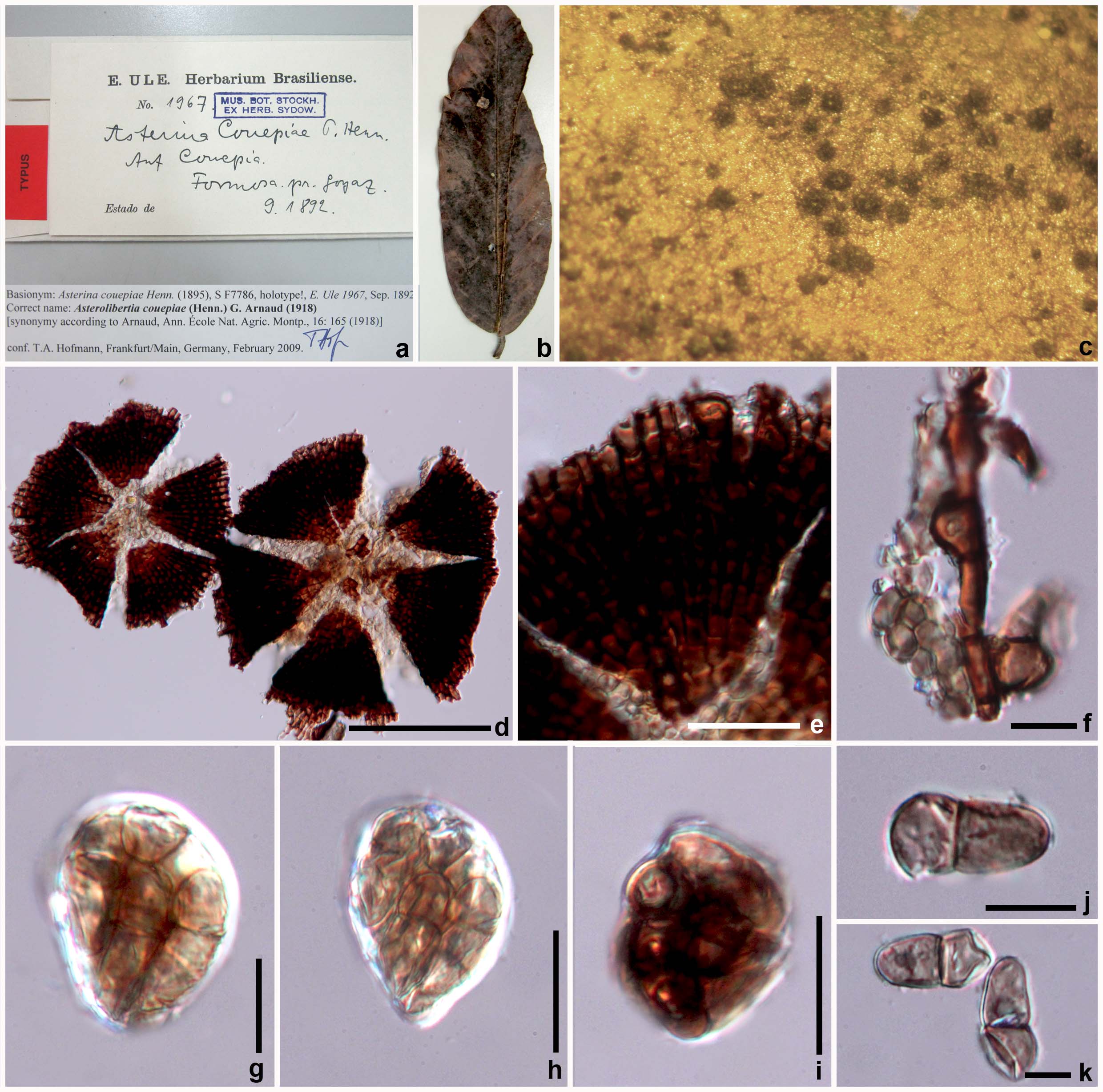Asterina couepiae (Henn.)Hongsanan& KDHyde, comb. nov. Index Fungorum: IF550714.
≡ Asterina couepiae Henn., Hedwigia 34: 104 (1895)
≡ Asterolibertia couepiae (Henn.) G. Arnaud, Annales de l’École Nationale d’Agriculture deMontpellier, N.S. 16(14): 165 (1918)
Type: S-F7786.
Epiphytes on surface of the leaves, forming blackened irregular areas. Superficial hyphae 4–6μm (x = 5μm, n=10), globose to subglobose appressoria, intercalary. Sexual state: Thyriothecia 161–204μm diam (x = 186μm, n=5), superficial, solitary or scattered, circular, flattened, wall composed with dark brown cells, upper wall with a parallel arrangement of cells radiating from the centre, nonbranching at rim, from which hyphae strands develop, dehiscing stellately at the centre, easily removed from host surface, with a poorly developed basal layer. Hamathecium lacking pseudoparaphyses. Asci 32–38 × 24–28 μm (x = 33×25μm, n=10), 8-spored, bitunicate, fissitunicate, globose to subglobose, with short pedicel or sometimes pedicel absent, ocular chamber not observed. Ascospores 22–24×7–10μm (x = 23×8μm, n=10), overlapping 2–3- seriate, oblong to fusoid, 1-septate, constricted at the septum, upper cell broader but shorter then lower cell, hyaline when immature, dark brown at maturity, smooth-walled. Asexual state: Unknown.
Material examined: BRAZIL, on surface of leaves of Couepia (Chrysobalanaceae), September 1892, E. Ule (SF7786,
isotype).
Note: The genus Asterolibertia has characteristics similar to Asterina species, and thus we synonymize Asterolibertia under Asterina based on morphology.
Fig. 1 Asterina couepiae (isotype). a, b Herbarium label and specimen. c Thyriothecia on substrate. d Squash mount of thyriothecium showing ostiole. e Upper wall cells. f Hyphopodia. g–i Asci. j, k Ascospores. Scale Bars: d=100μm, e, g–i=20μm, f–j=10μm, k=5μm

